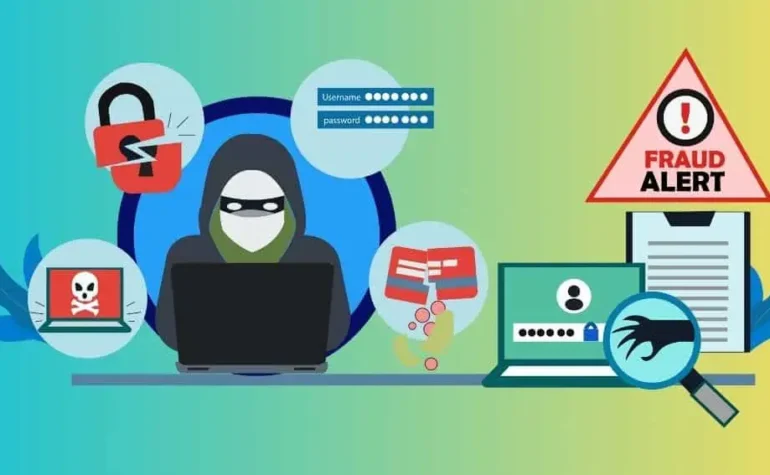Best Credit Card Processing Solutions Tailored for Every Industry

By admin May 31, 2024
Merchant account fraud is a growing concern for businesses of all sizes and industries. With the rise of online transactions and the increasing reliance on electronic payment systems, fraudsters have found new ways to exploit vulnerabilities in merchant accounts. This comprehensive guide aims to provide businesses with a thorough understanding of merchant account fraud, its various types, common vulnerabilities, warning signs, prevention strategies, response protocols, legal considerations, real-life case studies, and frequently asked questions.
Understanding Merchant Account Fraud
Merchant account fraud refers to any fraudulent activity that occurs through a business’s merchant account, which is a type of bank account that allows businesses to accept payments from customers via credit or debit cards. Fraudsters exploit vulnerabilities in the payment processing system to carry out unauthorized transactions, resulting in financial losses for businesses.
What is Merchant Account Fraud?
Merchant account fraud involves the unauthorized use of a business’s merchant account to make fraudulent transactions. This can occur through various means, such as stolen credit card information, identity theft, or the creation of fake accounts. Fraudsters often target businesses with weak security measures or those that lack proper fraud prevention protocols.
Types of Merchant Account Fraud

There are several types of merchant account fraud that businesses should be aware of:
- Credit Card Fraud: This involves the unauthorized use of stolen credit card information to make purchases or withdrawals. Fraudsters may obtain credit card details through various means, such as phishing, skimming, or hacking.
- Identity Theft: In this type of fraud, criminals steal personal information, such as social security numbers or driver’s license details, to impersonate individuals and open fraudulent merchant accounts or make unauthorized transactions.
- Chargeback Fraud: Also known as friendly fraud, this occurs when a customer disputes a legitimate transaction with their bank or credit card company, claiming that they did not receive the goods or services they paid for. This can result in chargebacks and financial losses for businesses.
- Account Takeover: In an account takeover, fraudsters gain unauthorized access to a merchant account by stealing login credentials or exploiting vulnerabilities in the account’s security measures. Once inside, they can manipulate transactions, redirect funds, or make unauthorized changes.
How Merchant Account Fraud Affects Businesses

Merchant account fraud can have significant financial, reputational, and legal consequences for businesses. Understanding these impacts is crucial for businesses to take proactive measures to prevent fraud.
Financial Consequences of Merchant Account Fraud
The financial consequences of merchant account fraud can be devastating for businesses. Some of the key impacts include:
- Chargeback Costs: When a fraudulent transaction is reported, businesses are often required to refund the amount to the customer. Additionally, they may incur chargeback fees imposed by payment processors or banks.
- Lost Revenue: Fraudulent transactions result in lost revenue for businesses, as they do not receive payment for the goods or services provided. This can have a significant impact on the bottom line, especially for small businesses with limited resources.
- Increased Operational Costs: Dealing with merchant account fraud requires businesses to invest in additional security measures, fraud detection tools, and staff training. These costs can add up quickly and strain the financial resources of businesses.
Reputational Damage Caused by Merchant Account Fraud
Merchant account fraud can tarnish a business’s reputation and erode customer trust. When customers become victims of fraud or perceive a business as insecure, they are likely to take their business elsewhere. Negative reviews, social media backlash, and word-of-mouth can further damage a business’s reputation, making it challenging to attract new customers and retain existing ones.
Legal and Regulatory Implications of Merchant Account Fraud
Merchant account fraud can also have legal and regulatory implications for businesses. Depending on the jurisdiction, businesses may be held liable for fraudulent transactions and may face legal action from customers or financial institutions. Non-compliance with industry regulations and standards can result in fines, penalties, and even the suspension of merchant accounts.
Common Vulnerabilities in Merchant Accounts
Merchant accounts can be vulnerable to various types of attacks and exploitation. Some common vulnerabilities include:
- Weak Passwords: Many businesses use weak or easily guessable passwords, making it easier for fraudsters to gain unauthorized access to their accounts.
- Lack of Two-Factor Authentication: Without an additional layer of security, such as two-factor authentication, fraudsters can easily bypass login credentials and gain control over merchant accounts.
- Inadequate Security Measures: Businesses that do not invest in robust security measures, such as encryption, firewalls, and intrusion detection systems, are more susceptible to attacks.
- Lack of Employee Training: Employees who are not adequately trained in recognizing and responding to potential fraud attempts may inadvertently fall victim to phishing scams or other fraudulent activities.
Recognizing the Warning Signs of Merchant Account Fraud
It is crucial for businesses to be able to recognize the warning signs of merchant account fraud to take appropriate action. Some common warning signs include:
- Unusual Transaction Patterns: A sudden increase in high-value transactions, multiple transactions from different locations, or a significant change in customer behavior may indicate fraudulent activity.
- Suspicious IP Addresses: Monitoring IP addresses associated with transactions can help identify suspicious activity, such as multiple transactions from the same IP address or transactions originating from high-risk countries.
- Unexplained Chargebacks: A sudden surge in chargebacks without a valid reason or a high chargeback ratio compared to industry standards may indicate fraudulent activity.
- Unusual Customer Behavior: Customers who exhibit suspicious behavior, such as making multiple purchases with different credit cards or providing inconsistent billing information, should be closely monitored.
Preventing Merchant Account Fraud: Best Practices

Preventing merchant account fraud requires a multi-layered approach that combines strong security measures, employee and customer education, and proactive monitoring and detection.
Implementing Strong Security Measures
Businesses should implement robust security measures to protect their merchant accounts. Some key measures include:
- PCI DSS Compliance: Compliance with the Payment Card Industry Data Security Standard (PCI DSS) is essential for businesses that handle credit card information. This standard outlines security requirements to protect cardholder data and prevent fraud.
- Secure Payment Gateways: Businesses should use secure payment gateways that encrypt customer data during transmission. This ensures that sensitive information is protected from interception by fraudsters.
- Two-Factor Authentication: Implementing two-factor authentication adds an extra layer of security by requiring customers to provide additional verification, such as a unique code sent to their mobile device, before completing a transaction.
Educating Employees and Customers about Fraud Prevention
Educating employees and customers about fraud prevention is crucial in creating a vigilant and informed community. Businesses should:
- Train Employees: Provide comprehensive training to employees on recognizing and reporting potential fraudulent activities. This includes educating them about common fraud techniques, warning signs, and the importance of following security protocols.
- Customer Education: Educate customers about fraud prevention measures, such as creating strong passwords, avoiding suspicious emails or links, and regularly monitoring their accounts for unauthorized transactions. Providing clear instructions on how to report suspected fraud can also help customers take appropriate action.
Monitoring and Detecting Suspicious Activities
Proactive monitoring and detection systems can help businesses identify and prevent fraudulent activities. Some effective strategies include:
- Transaction Monitoring: Implement real-time transaction monitoring systems that analyze patterns, detect anomalies, and flag potentially fraudulent transactions for further investigation.
- Fraud Scoring: Use fraud scoring models that assign a risk score to each transaction based on various factors, such as customer behavior, transaction history, and geographical location. High-risk transactions can be subjected to additional scrutiny or verification.
- Manual Review: Establish a process for manual review of suspicious transactions that have been flagged by automated systems. Trained fraud analysts can assess the legitimacy of these transactions and take appropriate action.
Responding to Merchant Account Fraud Incidents
In the unfortunate event of a merchant account fraud incident, businesses should follow these steps:
- Document the Incident: Keep a detailed record of all relevant information, including transaction details, customer information, and any evidence of fraudulent activity.
- Contact the Payment Processor: Notify the payment processor or acquiring bank immediately to report the incident and seek their guidance on further steps.
- Notify Law Enforcement: If the fraud involves significant financial losses or identity theft, report the incident to local law enforcement agencies and provide them with all available evidence.
- Inform Customers: If customer data has been compromised, promptly notify affected customers and provide them with guidance on protecting their personal information.
- Conduct an Internal Investigation: Review internal processes, security measures, and employee practices to identify any weaknesses or vulnerabilities that may have contributed to the incident.
- Implement Remedial Measures: Take appropriate steps to address the vulnerabilities identified during the investigation, such as strengthening security measures, updating policies, or providing additional employee training.
Legal and Regulatory Considerations for Merchant Account Fraud
Businesses must be aware of the legal and regulatory considerations surrounding merchant account fraud. Some key considerations include:
- Payment Card Industry Data Security Standard (PCI DSS): Compliance with PCI DSS is mandatory for businesses that handle credit card information. Failure to comply can result in fines, penalties, and loss of the ability to process credit card payments.
- Data Protection Laws: Businesses must comply with relevant data protection laws, such as the General Data Protection Regulation (GDPR) in the European Union or the California Consumer Privacy Act (CCPA) in the United States, to protect customer data and privacy.
- Reporting Obligations: Depending on the jurisdiction, businesses may have legal obligations to report merchant account fraud incidents to regulatory authorities or law enforcement agencies.
- Contractual Obligations: Businesses should review their contracts with payment processors, acquiring banks, and other relevant parties to understand their rights and obligations in the event of merchant account fraud.
Frequently Asked Questions (FAQs) about Merchant Account Fraud
Q.1: What is a merchant account?
A merchant account is a type of bank account that allows businesses to accept electronic payments from customers.
Q.2: How can businesses prevent merchant account fraud?
Businesses can prevent merchant account fraud by implementing strong password policies, two-factor authentication, regular security updates, employee training, fraud detection tools, customer verification processes, encryption, and regular security audits.
Q.3: What are the common warning signs of merchant account fraud?
Common warning signs of merchant account fraud include unusual transaction patterns, suspicious IP addresses, unexplained chargebacks, and unusual customer behavior.
Q.4: What should businesses do if they suspect merchant account fraud?
If businesses suspect merchant account fraud, they should document the incident, contact the payment processor, notify law enforcement if necessary, inform customers if their data has been compromised, conduct an internal investigation, and implement remedial measures.
Q.5: What are the legal and regulatory considerations for merchant account fraud?
Legal and regulatory considerations for merchant account fraud include compliance with PCI DSS, data protection laws, reporting obligations, and contractual obligations.
Conclusion
Merchant account fraud poses a significant threat to businesses, but with the right knowledge and preventive measures, it can be mitigated. By understanding the types of fraud, common vulnerabilities, warning signs, prevention strategies, response protocols, legal considerations, and real-life case studies, businesses can better protect themselves and their customers from the devastating consequences of merchant account fraud. It is crucial for businesses to stay informed, invest in robust security measures, and regularly review and update their practices to stay one step ahead of fraudsters.
